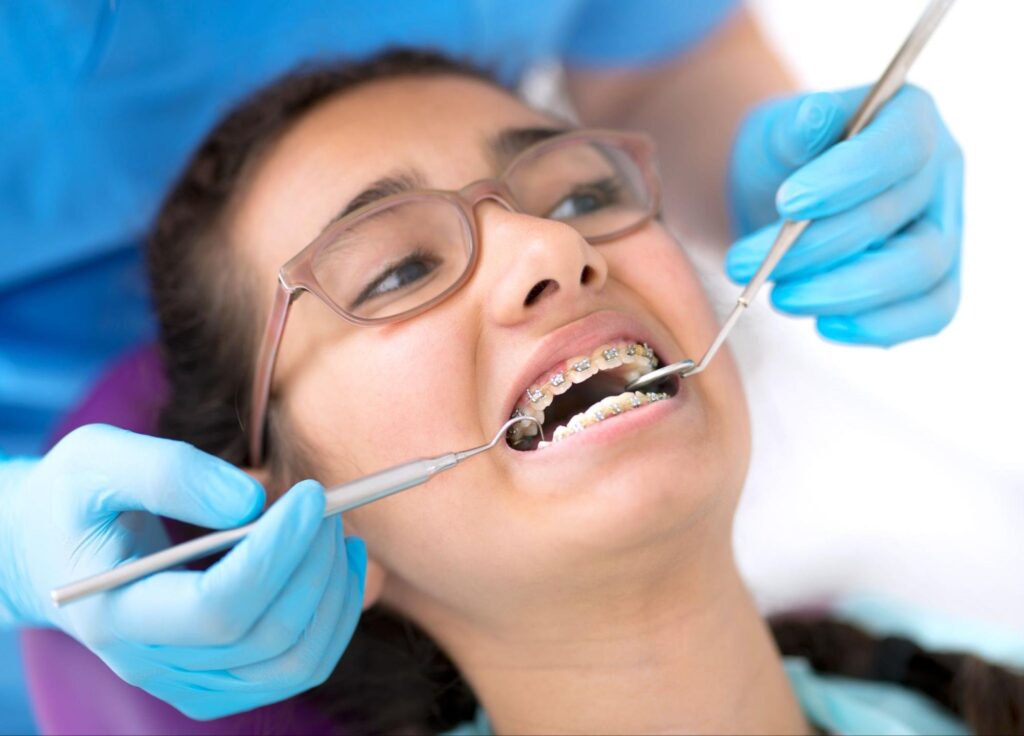If you’ve had orthodontic treatment in your life, we’re curious: Can you remember how old you were when you visited an orthodontist for the first time? Orthodontics is for people of all ages, but today, our Sturbridge Orthodontics team wants to tell you why your child needs to see an orthodontist by age seven, if at all possible!
The Magic Number
Typically, a child is referred to us for an initial evaluation by Dr. Sabelis or Dr. Tiberii by their general dentist around age seven. This is recommended by the American Association of Orthodontists (AAO). But there are times when even earlier intervention is necessary if they’re experiencing any of the following symptoms, for example:
- Early loss of primary teeth
- Overbites
- Underbites
- Crossbites
- Thumb-sucking after age five
- Pacifier use
- Spacing
- Crowding
These are all valid reasons to visit our office! But why is seven such a key number?
A Turning Point
There are actually a number of reasons this age is so heavily emphasized as a deadline of sorts for initial consultation—many of them simply being the timeline on which our bodies develop.
- Early Detection of Issues: By the age of seven, a child’s permanent teeth are beginning to emerge. This is an ideal stage for us to detect potential orthodontic issues and hopefully catch them before they develop into something more serious.
- Guidance of Jaw Growth: Our doctors are able to assess the growth of the jaw and identify potential discrepancies. Anatomically speaking, it’s easier to help this manner of issue earlier in life.
- Spacing: An early evaluation helps in assessing the space available for permanent teeth, showing us crowding or spacing problems.
- Detection of Habits: Certain habits, like thumb-sucking or tongue-thrusting, can impact dental development. If we can assess the behaviors early on, we can work with parents to try and absolve them.
- Preventative Measures: Addressing early issues prevents the development of more severe conditions. Our goal is always to try and avoid extensive, invasive treatment if we’re able to.
- Improved Confidence: When a child has early orthodontic treatment, their self-esteem can be positively impacted as they grow up.
Two-Phase Treatment
Of course, our chosen course of treatment will depend on each individual child—but something called Two-Phase Treatment is an option unique to our youngest patients. This method can be preventative or interceptive.
- Phase One: This process sets the stage for a full set of braces. Typically, it involves baby teeth, resolving issues with spacing and crowding in the mouth to provide adequate room for alignment. It can also focus on the alignment of the jaw being corrected.
- Phase Two: Once the mouth has been prepared and all permanent teeth have erupted around ages eleven or twelve, we’ll commence with a long-term appliance like traditional braces or clear aligners. They’ll wear these until we achieve our desired results.
The key to this process is that transition from baby teeth to permanent teeth, or catching the permanent teeth around when they first appear.
Other FAQs
- Does every child need braces?
- No, they all don’t. Many children don’t require our intervention—but many, many do! It’s important to know as soon as possible. As we said, we proudly treat teenagers and adults, as well as pediatric patients. But generally speaking, earlier treatment is easier for all involved.
- How long does orthodontic treatment for children typically last?
-
-
- This can vary quite a bit; it depends on the complexity of the case. Treatment will last anywhere from several months to a few years.
-
- Do braces hurt?
-
-
- Braces don’t hurt so much as cause some discomfort at first. It’s a big change for kids in particular. Over-the-counter pain relief is often recommended in the earliest stages of braces. There’s also always a possibility of wires being abrasive to gums. Orthodontic wax can help to provide a barrier.
-
- Can children play sports with braces?
-
-
- Yes—but they must wear a mouthguard. Failing to do so puts not only the appliance but also a child’s teeth at risk of damage. If they are dealing with bite issues that involve any sort of protrusion of teeth or the jaw, this is particularly risky.
-
- How often should a child visit the orthodontist during treatment?
-
- Regular appointments are typically scheduled every four to six weeks for adjustments and progress assessments. We maintain regular communication with all of our patients during their treatment. These aren’t really optional visits; it’s very important that you and your child stick to the schedule so that everything moves along as planned.
Making Moves
Hopefully, we’ve cleared up the reasoning behind this common guideline! We take such pride in helping set up kids with beautiful smiles. If you’re in the Sturbridge neighborhood and planning orthodontic treatment for your child, we are happy to help! You can reach our office at (508) 347-7540.



